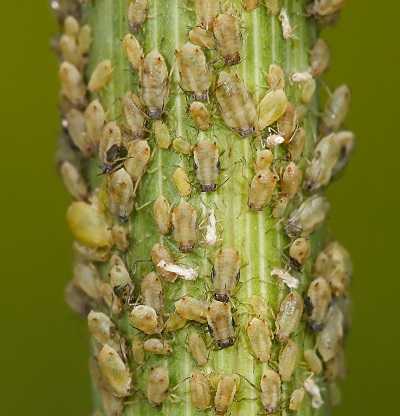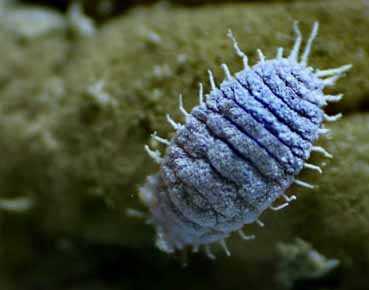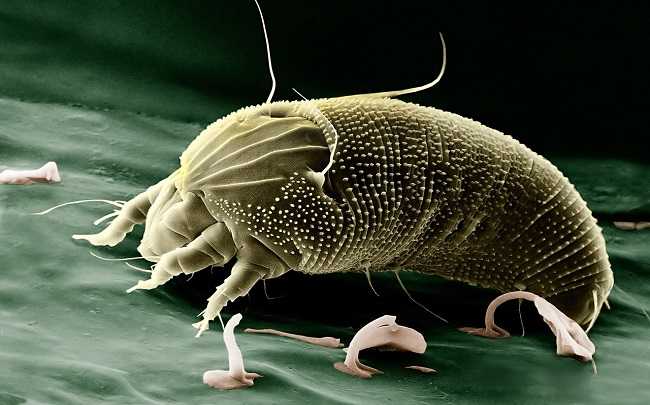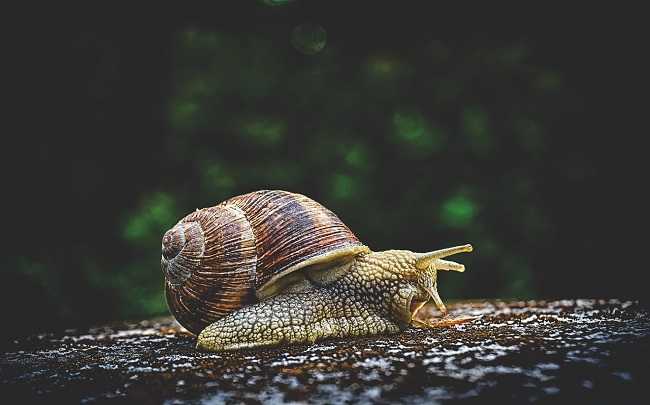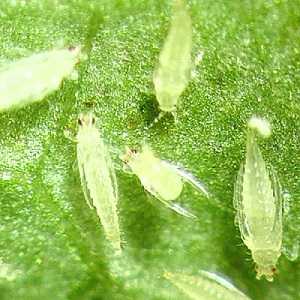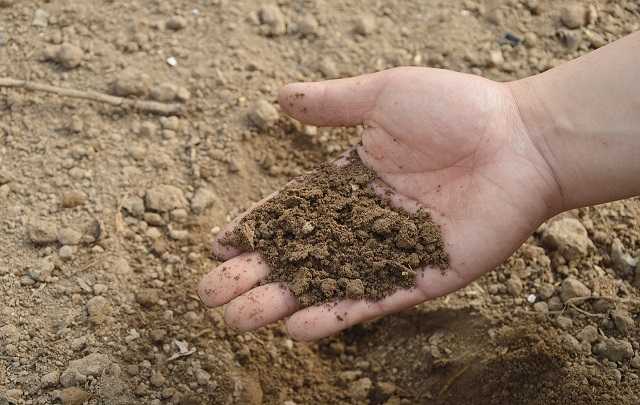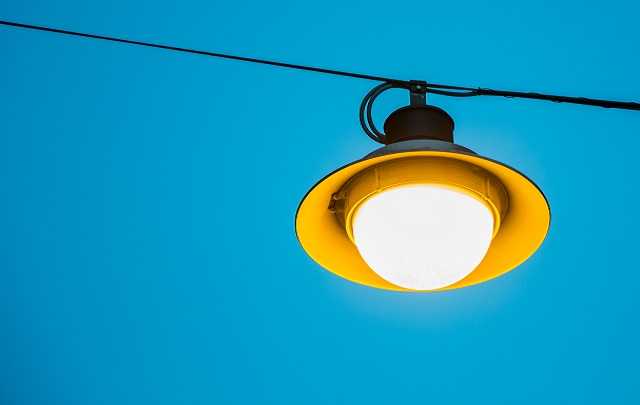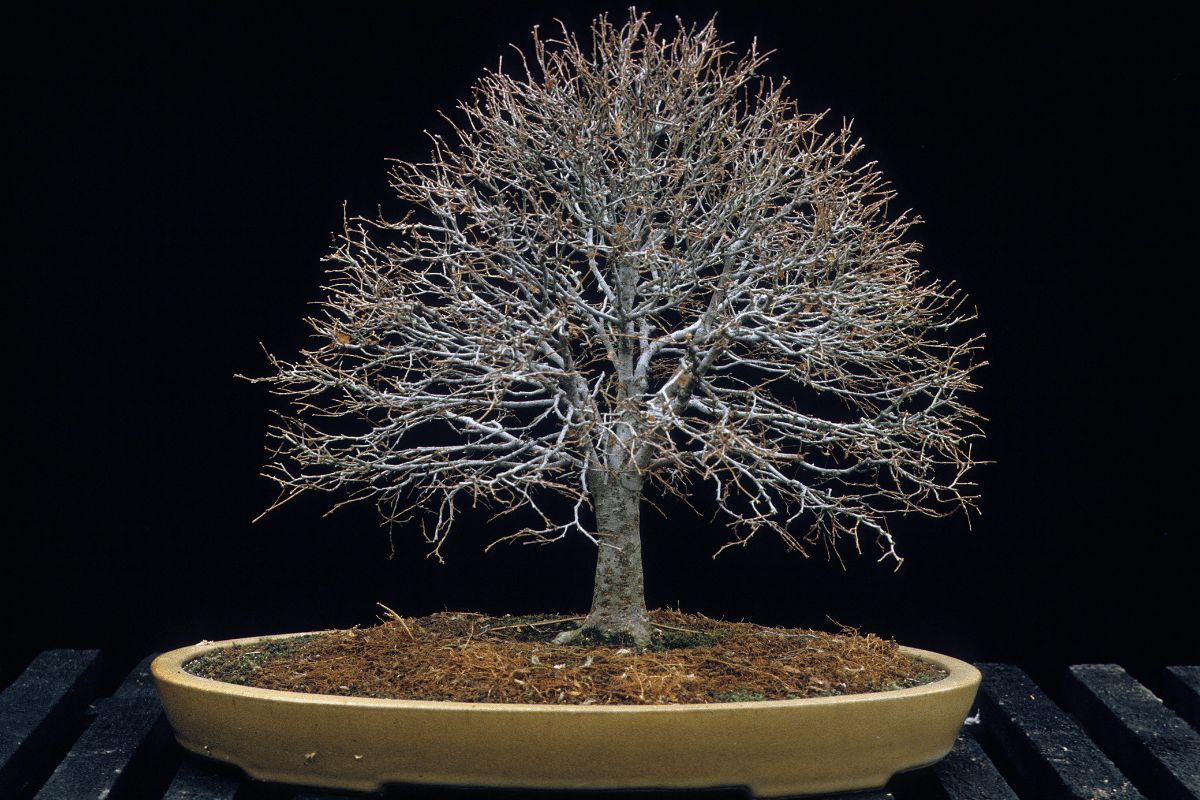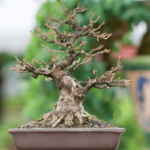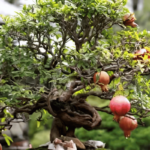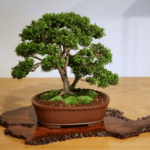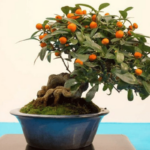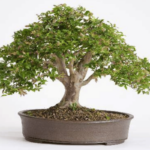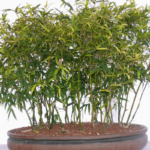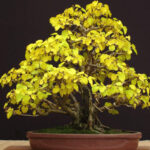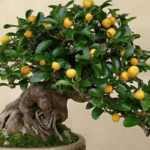There are some pests and diseases that can attack bonsai species and, if you don’t have the knowledge to identify them and combat them, you could lose your plants.
It was thinking about helping growers who want to keep their bonsai healthy and free from these problems that I wrote this text.
Below you will find out about the main pests and diseases that attack bonsai trees, what their symptoms are and what the most recommended combat methods are.
So, continue reading this article.
Pests in Bonsai
First let’s start with the pests, as they are the most common problems in bonsai.
In general, we consider as pests those animals that damage our plants in some way.
Since most of the time, the symptoms are visible and the fight can be done without major problems.
Below are the main pests that can affect your bonsai.
what to watch out for and how to fight them.
Aphid
Also known as plant lice.
Aphids usually stay in groups and mainly attack the following parts of bonsai trees:
- Sheets
- Flowers
- Stems
When infesting your plant, they will start to suck the sap at the same time that they release a toxic substance.
Usually an aphid infestation is accompanied by several ants walking around your plant.
This is because the droppings of these pests are sweet, which attracts ants.
Among the symptoms are:
- Ants on the plant
- Leaves turning yellow and wrinkled
- Leaf fall
In addition, another symptom is sooty mold.
Basically when aphids feed, they release a sweet substance.
And this substance attracts other fungi, and these fungi stay where the aphids attacked, disturbing the plant.
To combat this type of pest, cotton swabs with alcohol can be used if the infestation is still in its infancy.
And if the infestation is already in an advanced state, use insecticides.
Among the recommended insecticides are:
- Fort Bombril – Home and Garden (spray)
- Insetimax – Garden Inseticon
- Solve – insecticide
And if you want to use a slightly more natural option, smoke syrup will probably help you.
Mealybugs
Mealybugs are very similar to aphids.
You may even notice that they have almost the same symptoms as bonsai.
They are insects that can reach up to 5 millimeters in length.
They live in warmer and drier environments.
Some species of mealybugs can be easily identified because they are covered in a substance that is very similar to cotton.
The big problem with these pests is that they, like aphids, suck the sap from the plant.
In addition, they release toxic substances that hinder the development of bonsai trees.
Some symptoms are:
- Ants walking through the plants
- Smoky
- Leaves with yellow spots
- Small “cotton balls” on your plants
The fungicides recommended to combat this type of pest are the same as those used on aphids.
But you should put some mineral oil after application.
The oil will ensure that the mealybugs are eliminated.
But if you want to use a slightly more natural recipe, see below some alternatives:
- Smoke syrup
- Garlic siege
- Neem oil
- Methyl alcohol
Usually these natural recipes are more efficient when you realize that the infestation is still in its infancy.
Mites
They are very small spiders, measuring between 0.25 and 0.75mm.
Usually they look like ticks and feed mainly on the stems, leaves and in some cases the roots.
These unlike previous pests are rarely visible to the naked eye.
They are animals that like to:
- More humid places
- Very low ventilation and lighting
So make sure your bonsai is in a location that is not prone to this type of pest.
Among the main symptoms are:
- Little webs
- Defective flowers
- Yellow or reddish spots on the leaves
Usually you will find the mites on the underside of the leaves, to see them there is a very simple procedure:
“If you don’t have a lens (but you should), use a bright white piece of paper under direct sunlight, or a bright lamp, shake the leaves over the paper and watch for very small particles rushing to get to the other side. The mites are programmed to always go to the underside of the leaf.
To combat them, you can use a cotton swab with alcohol if you notice that the infestation is still in its infancy.
In cases where it has already developed, try to use acaricides.
And to prevent them, clean your plants at least once a month and remove the leaves that are already getting old.
NOTE: mites mainly attack bamboo bonsai .
Borers
Borers are small insects that prey on your bonsai.
They normally bore into logs and lay their eggs in them.
And when these larvae are born, they make small tunnels in the stem of your plant.
To end this plague you have a few options.
- If it is only on a branch of your plant: pull that branch and leave it far from your plants, if possible burn it.
- The attack is already more advanced: use an insecticide, injecting it into the trunk of your bonsai.
Slugs and Snails
Now let’s talk about two of the most common bonsai pests, slugs and snails.
Both like to hide during the day, staying especially in more humid places.
And during the night they eat the leaf of your bonsai.
To combat them, you can remove them manually.
Thus, you will look for them during the day, looking for their possible hiding places.
Or you can use baits that attract these animals.
Some options are:
- Supreme Mulcicidal Bait
- Made slug
The only thing you will do is leave the baits near your bonsai.
Ants
I believe I don’t need to explain what ants are.
Basically they cut their bonsai just like they do other plants.
To combat them naturally you have two options:
- Mint: it is a natural repellent, ants will distance themselves from this plant.
- Sergelin: it is a natural poison to kill ants.
But if the attack is already in a more advanced state, it is recommended to use granulated baits.
These baits are made for leaf-cutting ants, which in this case are the ones that are attacking your plant.
What you are going to do in this case is to leave these baits near the anthills.
Caterpillars
Caterpillars are the “younger version” of butterflies and moths.
Usually their symptoms are very similar to those of ants, as they also feed on the leaves of your bonsai trees.
These animals hide in the ground during the day and during the night they attack the plants.
Two symptoms that will help you differentiate caterpillar attacks from ant attacks are:
- You can find their nests in rolled leaves or on the back of leaves.
- They leave their feces.
Now that you know how to identify this pest, let’s take a look at how to combat it.
First, if you just want to avoid them, use one of the following plants:
- Mint
- Rosemary
- Leek
Because these plants scare the butterflies.
Now if the infestation is already bigger, you must use an insecticide.
Two options are:
- Dipel
- Agropel
Or you can use the insecticides that are used to fight mites.
Trips
Trips are very small pests that attack your bonsai.
Usually you will notice a few flying insects when you shake your plant.
To identify this pest, just notice if the young leaves of your bonsai are curling.
And in case the answer is positive, check if when you open these leaves you can see small insects.
Usually you will suffer more from these insects if you have a ficus bonsai.
The best way to fight them is with creolin or some insecticides.
Among the insecticides, some options are:
- Insectcon
- Malathion
And if you use creoline, be very careful because it can harm your plant’s soil.
And don’t forget to eliminate the infected leaves.
White fly
This is a rarer pest to appear on your bonsai.
The whitefly usually appears during the driest and hottest months.
And its main symptom is white scales on its bonsai trees.
Usually appearing on young foliage.
Bonsai Diseases
Now that we’ve seen what the main pests that affect bonsai are, let’s look at some diseases.
Remembering that diseases are usually more complicated than pests.
So avoid as much as possible that your bonsai contract these diseases so that you don’t have any problems.
Virus
Viruses are very difficult diseases to treat.
Usually they are caused by insects that suck your bonsai, for example aphids.
Therefore, the best way to prevent this disease is to prevent pests from contaminating your plant.
If your plant has a virus, you will notice that the branches and leaves have changed colors.
Usually the leaves form something like a mosaic.
To prevent your plant from dying, you have 2 options:
- Cut the affected areas and burn them
- Apply a fungicidal spray
But normally it is recommended to do 2 things, first you cut and then spray.
Fungi
Fungi appear when you are not growing your bonsai in the right way.
That is, when they stay in places with any of these characteristics:
- Very humid
- Temperature too high
- Poor ventilation
You will realize that your bonsai has fungus when some of the symptoms below appear:
- Round, yellowish spots with a necrotic appearance.
- Rotting roots
- Rust (usually the leaves will have a rust-colored powder)
- Bonsai yellowing and wilting
To combat this type of problem you must do 2 things.
The first is to provide a suitable place for your bonsai to stand.
Because even if you fight the disease, it will come back if you don’t provide an adequate condition for your plant.
And the second thing is to fight fungi with a natural or chemical fungicide.
Bacteria
Bacteria are one of the diseases that have the most complicated treatment.
To identify them, you will notice some rotten parts in your bonsai.
But be careful, this could also be a fungus.
To combat them, it is recommended to spray Bordeaux mixture on your bonsai every 7 days.
And to avoid them, spray every 30 days when your plant is healthy.
Other Bonsai Problems
In addition to pests and diseases in bonsai, there are also other problems that can affect your plant.
And all these problems are caused by wrong cultivation.
Therefore, if you are suffering from one or more of these problems, look for more information on how to cultivate your type of bonsai.
Lack or Excess of Water
These are the problems you will face if you are not watering your plant correctly:
- Leaf turns yellow and then detaches from the tree. This problem may be related to both lack and excess of water.
Symptoms of lack of water:
- Dry land
- Withered leaf
To combat this problem, vaporize your foliage, dip your plant in a basin wetting the substrate very well.
And after that, leave the bonsai in a more shaded place.
Symptoms of Excess Water:
- Wet trunk
- Dark and slimy trunk
To combat it, clean the trunk with a toothbrush and reduce watering for a few days.
And in the next watering, just wet the earth.
Lack or Excess of Nutrients
These problems mainly occur when you are not fertilizing your bonsai correctly:
Therefore, it is necessary that you choose the best fertilizer for your species.
And mostly fertilize with the correct amount.
Learn more about bonsais:
- Mulberry Bonsai – How to Take Care of it in 7 Simple Steps
- Pomegranate Bonsai – How to Care in 6 Simple Steps
- Jabuticaba Bonsai – Step by step to having fruits
Excess nitrogen
You will notice that the new leaves are appearing at a larger size than the others.
And besides, an excess in the amount of roots.
To get rid of this problem:
- Water your plant well
- Place it in a sunny location.
- Remove the “mutant” leaves
Lack of nitrogen
In this case, the leaves will also be larger, but the roots will not be in excess.
To combat this problem, just shorten the time interval in which you fertilize your bonsai.
But beware, prefer to decrease the time interval than increase the amount of fertilizer.
Phosphorus deficiency
Here you will notice that the younger leaves are not opening.
To fix this error, you have two options:
- Use bone meal to fertilize your bonsai
- Use a fertilizer with more phosphorus (Ex: NPK 4 10 8)
Lack of potassium
If your bonsai is lacking in potassium, the main symptom you will notice is that the leaves do not want to open.
And in that case, you should use a fertilizer with a higher amount of potassium.
A good option would be NPK fertilizers that have the last number higher, as K is potassium (EX: NPK 10 10 20)
Mineral deficiency
Your bonsai is in need of some type of mineral such as:
- Zinc
- Magnesium
- Iron
And in that case, you will notice that the leaves are turning yellow.
To combat this problem, just apply a mineral fertilizer.
Excess chlorine or mineral fertilizer
If you are watering your bonsai with chlorinated water, or if you are supplying too much mineral fertilizer, this problem will occur.
You will notice a white part in your vase and in some parts of the earth.
To combat do this:
- Remove this white part (with a brush and detergent)
- Soak the roots of the plant for about 30 minutes.
Problems with the Roots
Now let’s see some problems that roots can cause your bonsai.
If your bonsai has a lot of roots, you will notice a few things:
- The earth dries up very quickly.
- The leaves are wilted
- Few shoots
- Shoots smaller than normal
To end this problem, you must change the land your bonsai is on and prune the roots.
But if necessary, you can place your bonsai in a larger pot.
If he has rotted roots, the leaves of his bonsai will also wither and the earth will become wet.
Usually the roots become rotten due to fungus or bacteria.
To combat this problem, you must:
- Remove your plant from the pot
- Clean the roots
- Immerse your plant several times in a bowl of water.
- Cut the roots that are rotten
And when replanting your bonsai, add plenty of sand.
Lighting and Humidity
If you do not provide adequate lighting and humidity for your bonsai, these problems may appear:
Very strong sun
In that case you will notice that some leaves on your bonsai are burnt or dry.
To take care of this problem, move your bonsai to a more shady location.
Little sun on lower branches
The main symptom is that underneath your bonsai does not develop new leaves.
Also, maybe your branches are getting dry.
To fix this, prune a few leaves off the top of your bonsai and make sure all parts are getting full sun.
High humidity
Slime appears on the wood.
You must remove this slime and place your bonsai in a place with lower humidity.
Also, very high humidity helps the roots to rot, so be very careful.
Heat shock
It happens when there is a drastic change in temperature.
Here the leaves of your bonsai will fall for no apparent reason.
You must take your plant to a place with more shade and water the earth.
Low light
Some symptoms are very long leaves with a weaker shade of green.
In that case, gradually take your bonsai to sunnier places and remove those defective leaves.
Conclusion – Pests and Diseases in Bonsai
These were the main threats that your bonsai can suffer.
But remember, the best way to combat these pests and diseases is to avoid them.
Make sure your bonsai is well-cultivated and provides the ideal conditions for it to live.
And if you liked this article, help us reach more people, because that way you motivate us to produce more quality content like this one.
Click on the icons below and share this content.

